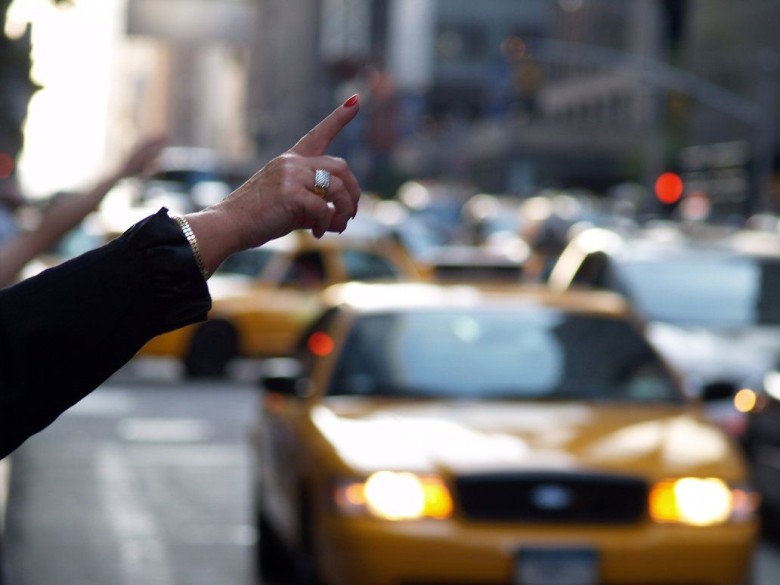Across cultures, hand gestures send some of the most powerful non-verbal messages. Most of these gestures are second nature for natives in each culture, but have alternative meanings around the world. Careful attention must be taken before interacting with other cultures to avoid making offensive gestures. Try to limit your use of hand gestures until you have observed appropriate usage. We have gathered a few interesting gestures so you know what to do!
The Beckoning Finger
In many cultures, including throughout North America, this gesture is mildly offensive and can even be demeaning. If you are in Latin America, you should use an open palm, face down, fanning in a downward motion. This is similar to the “shoo” motion in the U.S.
Hailing a Cab
With the rise of ride sharing apps, hailing a cab off the street is becoming a rather uncommon practice. However, some countries have interesting gestures that are still in use. In Asia, raise your right arm and point to the ground in front of you with fingers together. In Latin America, it is better to call for a taxi in advance rather than flagging one down on the street. In South Africa, people use different gestures for different routes. Gestures vary by the number of fingers used, a wave motion, or by making a cutting gesture with both hands. Visit here to read more.

Hands on the Hips
In Argentina and Mexico, standing with your hands on your hips will suggest a challenge or indicate that you are angry.
Arms Crossed
In the United States, this can signal a lack of comfort or confidence. However, it is respectful in Fiji to cross your arms behind your back while conversing. Adversely, In Finland, crossing one's arms is seen as extremely arrogant.
“Good luck”
The “figa” hand gesture (“I got your nose!”) means “good luck” in Brazil. Frequent use is welcomed. Be careful of who is around you if you use this, as it is a rude gesture in many other countries. Read more about Brazilian culture here.
“Okay”
Positive gestures in the U.S. include “thumbs up” or the “okay” sign, with the thumb and index finger making a circle and the other three fingers extended. These symbols generally should not be used in other countries, as they are usually considered vulgar. An exception is the use of the “okay” gesture in Japan, where it is interpreted as a symbol for money.
“I don’t know”
If a citizen of Paraguay brushes his or her fingers under the chin in an outward motion, this means “I don’t know.”
Rather than answering with a verbal “no,” the Japanese will signal that they don’t know or don’t understand by waving their own hand in front of the face with the palm facing outward.
Pointing
Pointing is often considered a rude gesture in any culture or country. Countries that find it the most offensive include: China, Japan, Indonesia, and Latin America. In many African countries, you should also only point at an inanimate object and never at people. Similarly, in India, using the index finger to point or beckon is only used for animals. Indonesians point with the thumb extended, instead of the index finger.
Nodding
In some Eastern European countries like Bulgaria, nodding your head side to side means "yes" rather than no. Shaking your head up and down means "no," rather than "yes.
Hands in Pockets
In the U.S., keeping one’s hands in their pockets is viewed as a casual, common practice. However, in some Asian cultures, like Korea and Japan, it is a sign of arrogance and considered rude.
Thumbs Up
In the US, giving someone a “thumbs up” is considered an approving, happy gesture. Yet, in large parts of the Middle East and South America, the thumbs up gesture is seen as offensive and should not be used.

Using the Index Finger
In Honduras, pulling the side of the eye downwards with the index finger means “watch out for trouble.” If the index finger is waved back and forth at chin level, this means “no” in Honduras.
The Moutza
In Greece, Mexico, the Middle East, and Africa, the action of raising your open hand, palm out, with spread fingers in front of someone is a serious sign of displeasure.
The Chin Flick
Brushing the back of your hand underneath your chin in a flicking motion means “get lost” in Belgium, northern Italy, and Tunisia.
When traveling to a new or foreign place, people often rely more heavily on hand gestures and body language to communicate when they are unable to do so verbally. It is important to pay close attention to what hand gestures one uses in certain geographical areas to avoid miscommunication.
If you are interested in reading more check out our Destination Profiles, or learn more about our Intercultural Training programs.



